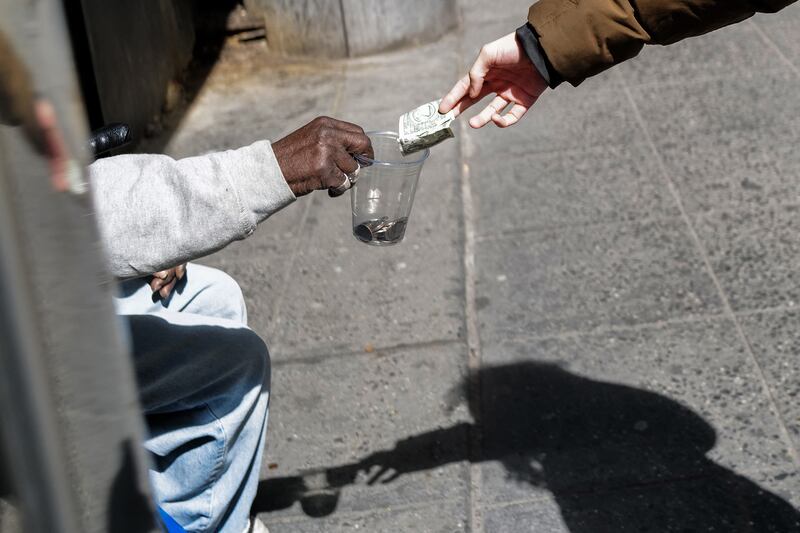McSorley’s Old Ale House in Manhattan, just across from the fabled Cooper Union and a staple on East 7th street since 1854, may be the last bastion of civilisation in more ways than one. It has remained true to the tenets of its founding fathers under the ownership of the Mahers in that there are still no televisions showing sport on silent, still no background music playing Taylor – James or Swift – and, most radically, no cards accepted behind the bar. If it was good enough for former patrons such as Boss Tweed and John Lennon, then it’s good enough for nowadays people. So McSorley’s is the rarest of holdouts: a cash-only bar.
I hadn’t been in the place for almost a decade and on a recent visit automatically handed a card across the counter and tried to figure out why the be-aproned barman was looking askance. He laughed and said McSorley’s is cash only. Of course! It was one of the golden rules and proffering something as impersonal and newfangled as a bank card could rightly be considered a breach of their abiding warning: Be Good or Be Gone. Lord only knows what would happen if you tried to pay with your watch.
[ Cash-only businesses: ‘We’re going to do this as long as we possibly can’Opens in new window ]
The only concession they have made is to locate a stand-alone ATM just outside the door so that first-time visitors (or the merely stupid) don’t have to wander the East Village looking for a cash machine. In 2015, according to a World Economic Forum report, just 24 per cent of Americans never used cash on a week-to-week basis. By 2022, that figure had almost doubled to 41 per cent, and that number is accelerating all the time. Correspondingly, the number of ATMs is steadily dipping across America.
The moment illustrated just how thoroughly the once ubiquitous single dollar- the Benjamin – or the $20 bill – with the silvery mop and stern expression of Andrew Jackson as the cover star – have disappeared from day-to-day life. The same, of course, is happening throughout Ireland and Europe but the dollar – both the word and the physical run of notes – were such a vital and colourful part of the American experience throughout the 20th century that it is surprising to see the art form of grubby day-to-day commerce evaporate so quickly.
Not all that much time has passed since the bar counters in America were festooned with dollars on a busy afternoon or evening, with patrons leaving their money alongside their glasses for the bartenders to act as cashier as they served them up, and gratuity notes left strewn across the counter when times were good. It was an impractical scenario and based on trust and, for that very reason, kind of appealing. Cash was the king of currencies in the hospitality industry, where waitstaff still depend on tips for their livelihood but now, of course, gratuities are digital and traceable rather than the old-world system of a cash thank-you pocketed or pooled.

I was in the United States for a full month before I noticed anyone paying for anything with actual dollars and cents – and that was because the line of people and the cashier were becoming impatient waiting for the guy to count out his loose change: the act itself was like something out of time.
All the reasons for the swift and strangely unspoken move to the world of digital payments are easily and frequently articulated: it is quicker and cleaner; cash, being coin and paper, was filthy and inconvenient and a nuisance in all kinds of ways. Eight years have passed since Kenneth Rogoff published The Curse of Cash, arguing that eliminating paper currency – or at least large denominations – would help address myriad social ills, from tax evasion to terrorism.
Still, the decline in actual dollar transactions occurred so sweepingly that the New York Senate passed a law prohibiting food service and retail establishments from refusing to accept dollars and cents. The only way around it was to install a “reverse” ATM – which accepts cash in exchange for an instant debit card, which can be used in the store. Inevitably, reverse debit cards are on the rise across the United States. And the digital ways to pay become ever more faddish: if paying by phone or watch is too much of a yawn, one grocery chain is now teaming up with a certain ecommerce giant to facilitate customer payment by merely holding the palm of one’s hand over the payment scanner.
[ If people are buying with their cards, why do they still want to keep cash?Opens in new window ]
The knock-on effects of the vanishing dollar are arguably most ruinous for the neediest of people. Some 653,000 experienced homelessness in the US in 2023, a record high. Ninety years have passed since Bing Crosby popularised the Broadway song Brother, Can You Spare A Dime?, which became one of the abiding sounds – and phrases – of the great depression. But with fewer and fewer people carrying dollars, let alone dimes, the oldest phrase of the city street hardly seems worth making.













